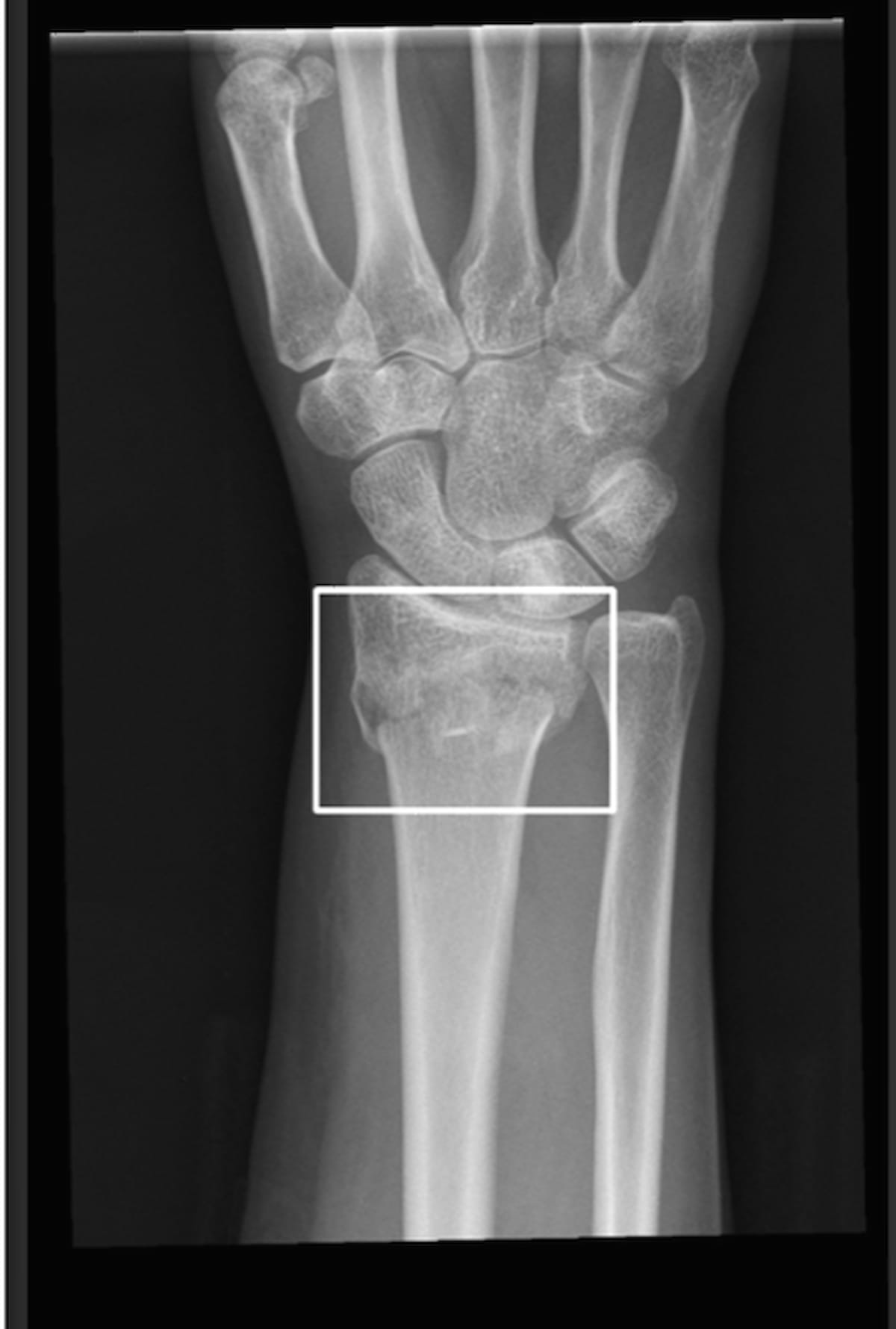AI Facilitates Nearly 83 Percent Improvement in Turnaround Time for Fracture X-Rays
In addition to offering a 98.5 percent sensitivity rate in diagnosing fractures on X-ray, an emerging artificial intelligence (AI) software reportedly helped reduce mean turnaround time on X-ray fracture diagnosis from 48 hours to 8.3 hours, according to new research presented at the Radiological Society of North America (RSNA) conference.
Adding artificial intelligence (AI) software to radiology workflows for X-ray fracture detection may lead to a sixfold reduction in turnaround time from image acquisition to the final radiology report, according to findings from a recent multicenter study.
For the retrospective study, which was presented at the Radiological Society of North America (RSNA) conference, researchers assessed the AI software Rayvolve (AZmed) in enabling triage of X-rays with positive findings for fracture. The study involved X-ray data from a total of 1,442 patients drawn from 14 SimonMed Imaging outpatient centers. The FDA-cleared software reportedly provides notification of priority cases for review three times a day, according to the study.
In a six-month comparison of 159,601 X-ray exams performed without AI in 2022 to 170,703 X-ray exams performed with AI in 2023, the study authors found that adjunctive AI led to an 8.3-hour turnaround time for final radiology report results in comparison to a 48-hour turnaround time without the use of AI.
“A patient diagnosed with a fracture receives results 6 times faster with the AI,” noted Sean D. Raj, M.D., the lead author of the study and chief innovation officer at SimonMed Imaging.
In addition to facilitating a greater than 40-hour difference in turnaround times for high-priority fracture X-rays (7.2 hours vs. 47.7 hours), the AI software demonstrated a 98.5 percent sensitivity rate, an 88.2 percent specificity rate and a 98.8 percent negative predictive value (NPV) for fracture detection, according to the study authors. (Image courtesy of RSNA.)

(Editor’s note: For related content, see “Gleamer’s BoneView Gains FDA Clearance for AI-Powered Pediatric Fracture Detection,” “Study: AI Enhances Abnormality Detection on CXR Across Radiologist Experience Levels” and “Can AI Improve Triage Efficiency in Radiology Workflows for Follow-Up X-Rays?”)
In addition to facilitating a greater than 40-hour difference in turnaround times for high-priority fracture X-rays (7.2 hours vs. 47.7 hours), the AI software demonstrated a 98.5 percent sensitivity rate, an 88.2 percent specificity rate and a 98.8 percent negative predictive value (NPV) for fracture detection, according to the study authors.
Specifically, for 109 hip fractures, the AI software offered a 97.1 sensitivity rate, an 86.7 percent specificity rate and a 98.5 percent NPV, according to the study. For 82 shoulder fractures, the researchers noted 100 percent sensitivity and NPV rates as well as 79.2 percent specificity rate.
Reference
1. Raj SD, Sadegi B, Simon J. Radiologist worklist reprioritization utilizing artificial intelligence: measuring turnaround time for fracture detection on MSK X-rays sourced from a nationwide outpatient imaging practice. Presented at the RSNA 2023 109th Scientific Assembly and Annual Meeting Nov. 26-30, 2023. Available at https://www.rsna.org/annual-meeting . Accessed December 18, 2023.
Newsletter
Stay at the forefront of radiology with the Diagnostic Imaging newsletter, delivering the latest news, clinical insights, and imaging advancements for today’s radiologists.
Stroke MRI Study Assesses Impact of Motion Artifacts Upon AI and Radiologist Lesion Detection
July 16th 2025Noting a 7.4 percent incidence of motion artifacts on brain MRI scans for suspected stroke patients, the authors of a new study found that motion artifacts can reduce radiologist and AI accuracy for detecting hemorrhagic lesions.